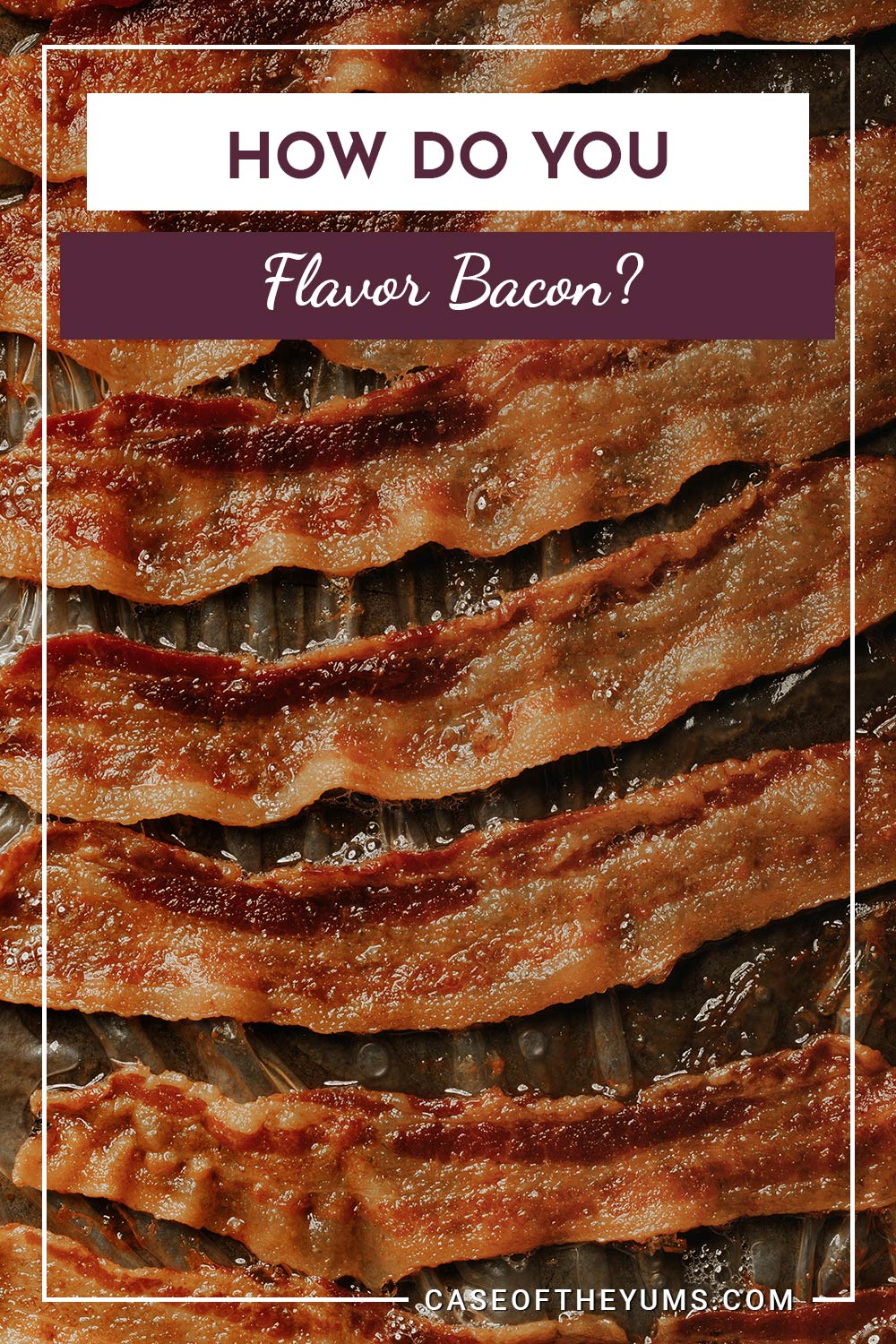How Do You Flavor Bacon?
We may earn commissions for purchases made through links on our site. Learn more on our about us page.
When it comes to flavoring bacon, you must either start before packaging or during the cooking process. Ever noticed when you are walking down the aisles when you get to the meats section that contains bacon, there are multiple kinds, such as maple flavored bacon?
This is because the farmer puts the cuts of bacon through a curing process that can add flavorings, such as honey and maple, to name a few.
The next opportunity for flavoring the bacon comes out of the package before cooking or as part of a larger recipe during the cooking process.

What Gives Bacon its Taste?
The primary flavor will come from the natural flavors of the species of pigs butchered, from what the animals were fed during their life, but also from the curing process.
Butchers will take certain cuts and use different flavors and seasonings to prepare the bacon for cooking or storage.
That is when the maples, or peppered bacon, are given their flavor. Next thing that gives bacon that flavor is hidden in the fats of each slice, which can absorb any seasoning from the cooking or during the prepping process.
How Do You Add Flavor to Bacon?
Bacon will get additions to the natural flavor during the butchering process, in which the meat is cured using smoking or jerking-like processes.
A butcher can also add seasonings, depending on the family’s or customers’ desires. This will allow the bacon to soak in the flavors before being cooked.
After cooking, there then becomes the opportunity to use bacon as part of other dishes. For example, the addition of bacon can supplement a salad or sandwich but also, in effect, adds flavor to the bacon (as part of a meal.)
Why does Restaurant Bacon Taste so Good?
One secret of the breakfast restaurants will be cast iron cookery, griddles, and other cooking surfaces that aid the chefs.
Sit-down restaurant chefs are hired with the knowledge that their bacon hamburgers will have crispy bacon and be able to cook the beef to the customer’s specifications.
Not to mention that most bacon used there is specially cured for the restaurant, such as with applewood smoked bacon that can be found at select restaurants.
As the general public, we will be given bacon from larger-scale production efforts focused on supplying supermarkets and major retailers, not from restaurant-contracted farms and ranches.
Is it Better to Fry or Bake Bacon?
It is popularly believed that baking bacon will reduce the greasiness and provide better crispiness, along with allowing for more slices to be cooked thoroughly at one time.
However, others will hold true to the cast iron kitchenware, well-seasoned, fried up in the same grease the bacon produces.
Think about it like this, the baking process will allow for healthier pieces of bacon by simply not cooking in the grease but instead by convection heat.
The flavor profile from a cast iron pan that has made eggs and bacon a few hundred times can not be matched by an oven, and therefore both methods will be better for different reasons.
Should You Cook Bacon Quickly or Slowly?
When you cook bacon quickly, you get shriveled-up pieces perfect for crumbling into omelets, salads, and soups but not the best for BLT sandwiches or satisfying to crunch on as a pick-up breakfast item.
If you slow the process down, the bacon cooks with more flavor preserved and sealed inside, plus makes for the best burger and sandwich strips of bacon.
The overall consensus will be to cook the bacon slower, to be patient, and let it crisp up at a laid-back pace. Differences are in the preferences for crispiness and chewiness.
Final Thoughts on How Do You Flavor Bacon
Bacon is one of the most coveted cuts of meat on earth, especially in the United States. There are even commercials of dog treats that mimic the smell and taste of bacon so that your four-legged friends can also enjoy a strip.
When it comes to the curing processes, there are going to be many different cuts and flavoring options to try, as unique as the regions the pigs are raised in. If you are a farmer, consider what grows wild around you, berries or other fruits, teriyaki or peppered.
If you are a novice, this flavoring of meat cuts, particularly bacon, is the fun part of being a farmer, only bested by eating the bacon.



Leave a Reply
You must be logged in to post a comment.